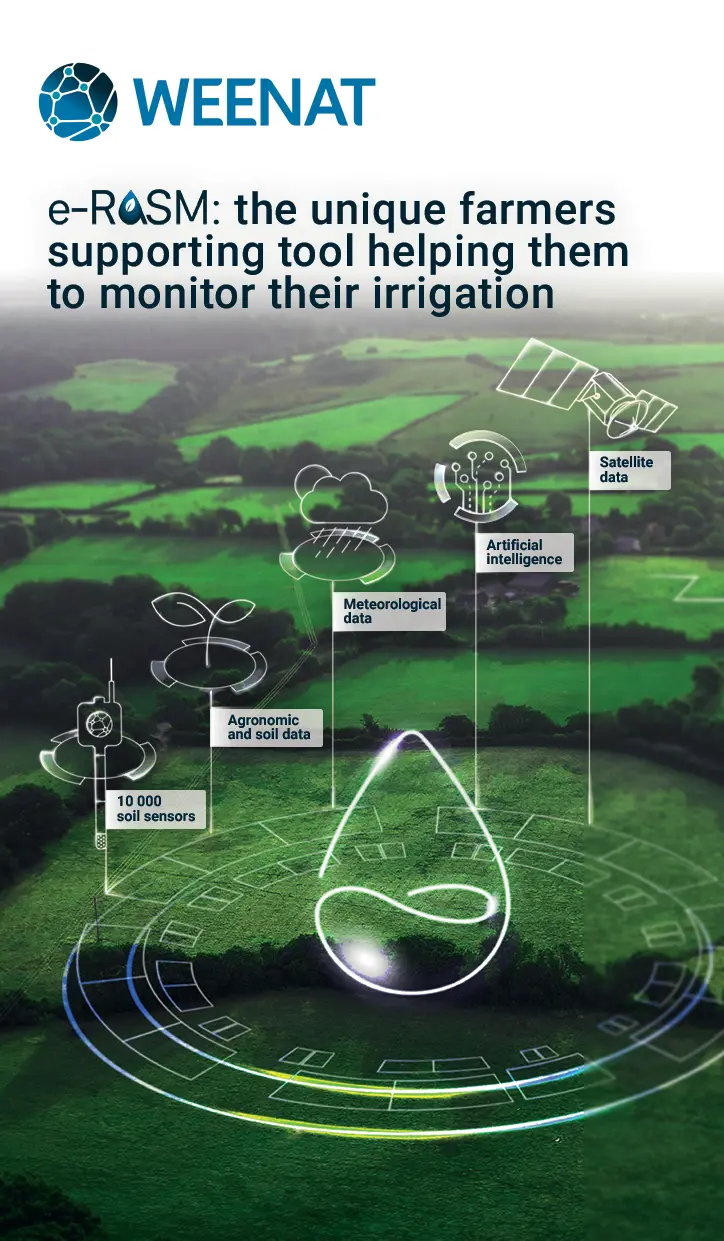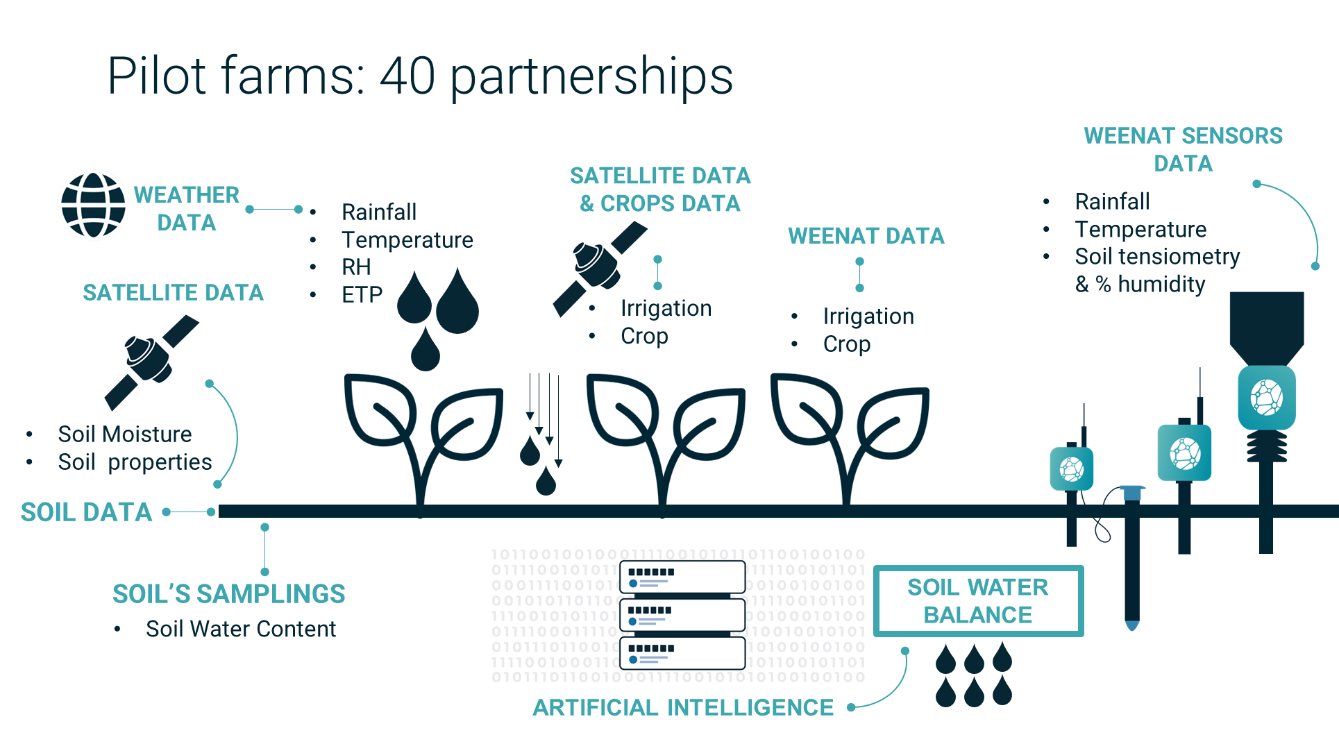
Objectives of the service

The e-RASM project aims to create an irrigation monitoring solution to farmers. Weenat, a company specialized in agro-meteorology, spatialized weather and irrigation management tools, is using the benefits of satellite remote sensing to create an innovative solution gathering a multitude of data sources into our proprietary Artificial Intelligence soil model in order to build a scalable, simple and affordable hydric stress indicator for all crop and soil types. With e-RASM, farmers are more efficient in their daily irrigation decisions leading to a better usage of the water resource, decreasing operational costs at farm level and workload. In the context of climate change and growing population, e-RASM is helping farmers maintaining their yield under climatic uncertainty while reducing their impact on the environment.
Users and their needs
The e-RASM tool is addressing multiple users in EU: farmers, cooperatives, agro-industrials and public authorities.
Service/ system concept
e-RASM is a decision support tool (DST) providing 14-days forecasts of a soil water index to help customers to manage their irrigations. This DST is 100% digital as no soil sensors are required and aims to be available for the main European crops and soil types. The tool is available on the Weenat application or via API.
Space Added Value
Most of the competitors’ solutions for optimizing irrigation are based on: i) satellite/weather data without any soil sensors calibration ; ii) water balance models that are difficult to calibrate. We have about 25k soil sensors and weather stations deployed in Europe that can be used in combination with satellite data (Landsat, Copernicus, MODIS, ...) to develop a powerful and well-calibrated tool to calculate the soil water status of each crop everywhere in Europe. The contribution of satellite data enables the extension of our services to countries where the networks are less efficient and at a lower cost. In addition, satellite indicators (soil moisture, soil temperature, vegetation indexes) can help us to extend our knowledge of the state of water stress in farmers' plots.
Current Status

40 pilots farms are participating to the project in 2024
-
Our station observation database has been rebuilt to enable the storage of non-weather satellite data. Data collected from our Weenat soil sensors (tensiometers, capacitive probes) have been cleaned and stored in our new internal database.
-
A new version of our grid database is currently in progress. Satellite databases on vegetation, land surface temperature and soil moisture/humidity have been sourced, tested, compared and then selected to be integrated in this database. Soil databases have also been studied in order to determine the most relevant physical, chemical and hydrological parameters to explain the water retention.
-
More thant 1000 soil samples have been collected and more than 300 samples have been analysed in our laboratory to obtain their proper water retention curve and calculate the field capacity and wilting point soil parameters.



